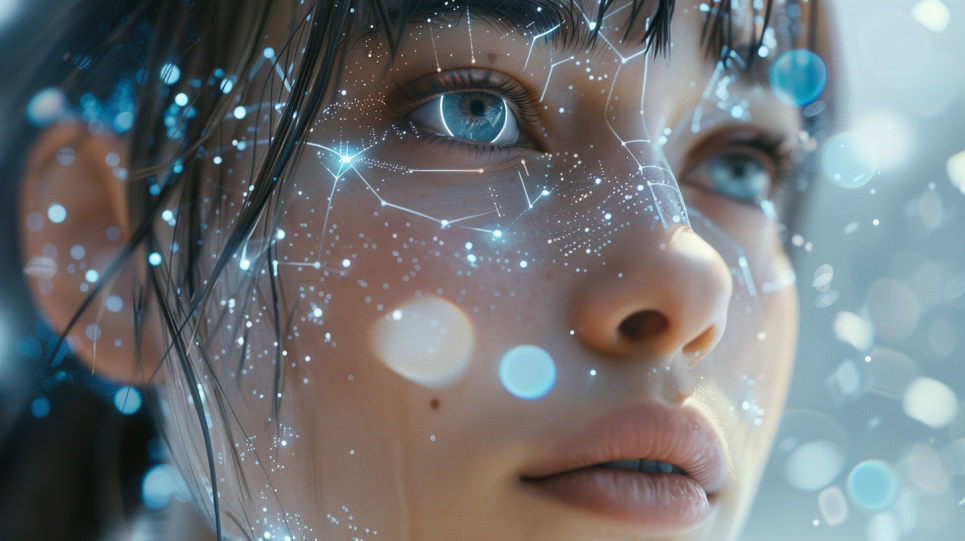Imagine a realm where your words are not just expressions but the very tools that craft realities; where your phrases and sentences paint vivid, dynamic scenes in a limitless digital expanse. This is no longer a flight of fancy but a tangible reality, made possible by OpenAI’s groundbreaking innovation – Sora. Far more than a mere buzzword in the corridors of technology and creativity, Sora heralds a seismic shift in the realm of creative expression. It’s where the artistry of storytelling converges with the precision and limitless possibilities of artificial intelligence.
In this new world, Sora acts as a bridge between the human imagination and digital creation. It transcends the traditional boundaries of content production, introducing a paradigm where thoughts and ideas can be transformed into visual narratives with an unprecedented level of detail and emotion. This isn’t just an advancement; it’s a revolution that redefines the essence of storytelling.
The Evolution of Text-to-Video AI
This story begins with a modest yet significant step: the translation of text into static images. Early AI models like OpenAI’s DALL-E broke new ground by transforming written descriptions into visual representations, demonstrating the potential of AI to understand and interpret human language in visual forms. These initial forays laid the foundational stones for more ambitious pursuits in AI.
As the technology progressed, the focus shifted from still images to the realm of motion. We witnessed AI’s gradual proficiency in creating brief video clips from text. These models could take simple descriptions and turn them into short, albeit limited, moving scenes. While groundbreaking, these early video models were constrained by their brevity and a lack of depth. The visuals were often simplistic, and the narrative possibilities confined to just fleeting moments.
Enter Sora, a beacon of advancement in this evolutionary journey. It transcends the previous limitations, offering a glimpse into an era where AI-generated content achieves a level of sophistication and depth previously unimagined. Sora’s capability to create detailed, minute-long videos from textual prompts is not just an incremental improvement; it’s a quantum leap.

Unveiling Sora – A New Epoch in AI-Driven Video Innovation
OpenAI’s demonstrations of Sora have been nothing short of revelatory. They showcase an extraordinary proficiency in crafting scenes that pulsate with realism and attention to detail. Each scene produced by Sora is not just a visual output; it’s a tapestry woven with myriad intricate elements. The fluidity of character movements, the authentic rendering of emotions, and the subtle interplay of light and shadow all contribute to creating narratives that resonate with lifelike authenticity and emotional depth.
Sora’s prowess extends beyond mere technical achievement. The model demonstrates an acute understanding of cinematic techniques, employing angles, lighting, and pacing that mirror professional filmmaking. This advancement opens a plethora of possibilities for content creators, offering a tool that understands and adapts to the nuances of storytelling. Whether it’s creating a serene landscape, a bustling urban setting, or an emotionally charged dialogue between characters, Sora handles these with a finesse that blurs the line between AI-generated content and human-crafted artistry.
Furthermore, the implications of Sora’s capabilities are profound for various industries. In marketing and advertising, it paves the way for creating more engaging and immersive content. In education and training, it offers a means to develop realistic simulations and scenarios. The potential in entertainment and media is particularly staggering, with Sora enabling the creation of complex narrative sequences and visual storytelling that were once the sole domain of high-budget productions.
The Distinction of Sora in AI Video Creation
What sets Sora apart is not just its ability to generate longer videos but its profound understanding of language and context. This deep comprehension allows Sora to create scenes that don’t just mimic reality but reflect its complexity and richness.
In the hands of filmmakers and content creators, Sora becomes more than a tool; it’s a catalyst for innovation. Its nuanced understanding of storytelling elements enables the creation of scenes that are rich in detail and emotion, bridging the gap between AI-generated content and human creativity. With Sora, creators can delve into unexplored narrative territories, pushing the boundaries of what can be visualized from mere text descriptions.
Moreover, Sora’s intuitive understanding of various genres and styles opens up new possibilities for personalized content creation. It can adapt to the unique requirements of different storytelling formats, whether it’s a fast-paced action sequence, a slow and emotive drama, or a visually rich fantasy world. This flexibility is pivotal in an era where content is increasingly tailored to meet diverse audience preferences.
Charting Sora's Ethical and Creative Frontiers
The advent of Sora also brings with it a significant level of responsibility. OpenAI is acutely aware of this fact, and as a result, has implemented rigorous protocols to ensure the ethical deployment of this powerful tool. The model undergoes thorough evaluation by specialized red teams, designed to proactively identify and mitigate potential risks. This scrutiny is essential in ensuring that Sora is used in a manner that benefits society and does not inadvertently contribute to the spread of misinformation or unethical content creation.
Furthermore, OpenAI’s collaboration with artists and filmmakers in refining Sora’s capabilities signifies a commitment to responsible and innovative use. These collaborations serve a dual purpose: they help fine-tune the model to better serve the creative community, and they also provide an essential feedback loop to ensure that ethical considerations are woven into the fabric of Sora’s development and application. This balanced approach is crucial in harnessing Sora’s potential while maintaining a strong ethical foundation.
Simultaneously, Sora stands as a beacon of the expanding role of AI in the realm of creativity. It challenges and redefines traditional notions of artistry, blurring the previously clear lines between human and machine-generated creativity. As AI continues to evolve, it’s not just the methods of creation that are being redefined, but also our very perception of art and narrative. Sora offers a glimpse into a future where AI is not just a tool for creation but an active participant in the creative process, offering new perspectives and pushing the boundaries of what is possible in art and storytelling.
In essence, the journey with Sora is twofold: it’s an exploration into the vast potential of AI in creative expression and a cautious, guided journey through the ethical landscape that surrounds advanced AI technologies. As we embrace the creative possibilities that Sora brings, we also engage in a critical dialogue about the ethical implications of such powerful tools, ensuring a future where innovation and responsibility go hand in hand.

Conclusion
As we reach the culmination of this exploration into Sora’s world, we stand at the threshold of a new era in digital creativity and ethical AI use. The unveiling of Sora is not just about the introduction of a new technology; it represents a significant shift in how we approach storytelling, creativity, and ethical considerations in the age of advanced AI.
In this new dawn of AI-driven storytelling, Sora stands as a beacon of potential, a tool that transcends the conventional boundaries of narrative creation. As we step into this exciting future, we are not just witnessing a technological revolution; we are participating in a transformative moment in the history of creativity and ethical AI use. The story of Sora is just beginning, and its chapters will be written by those who dare to imagine, create, and ethically shape the narratives of tomorrow.
Vladimir Dasic
Founder and CEO of Vuk Multimedia, since 2018